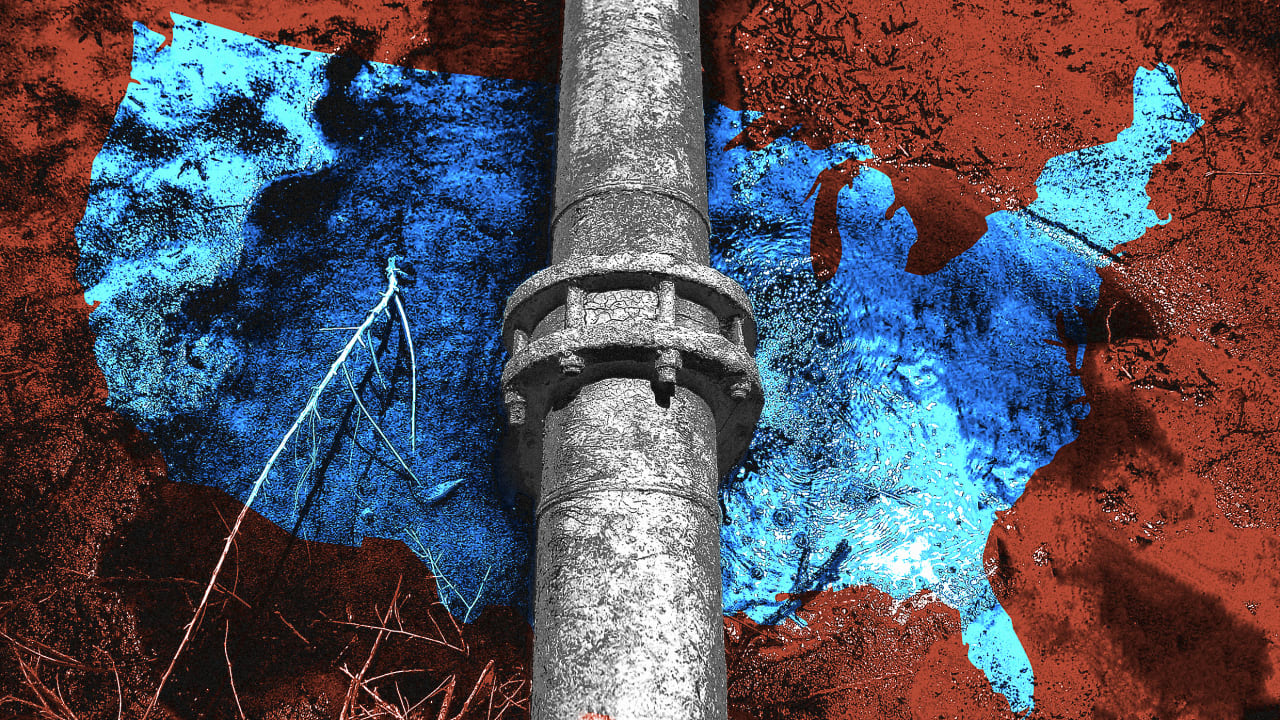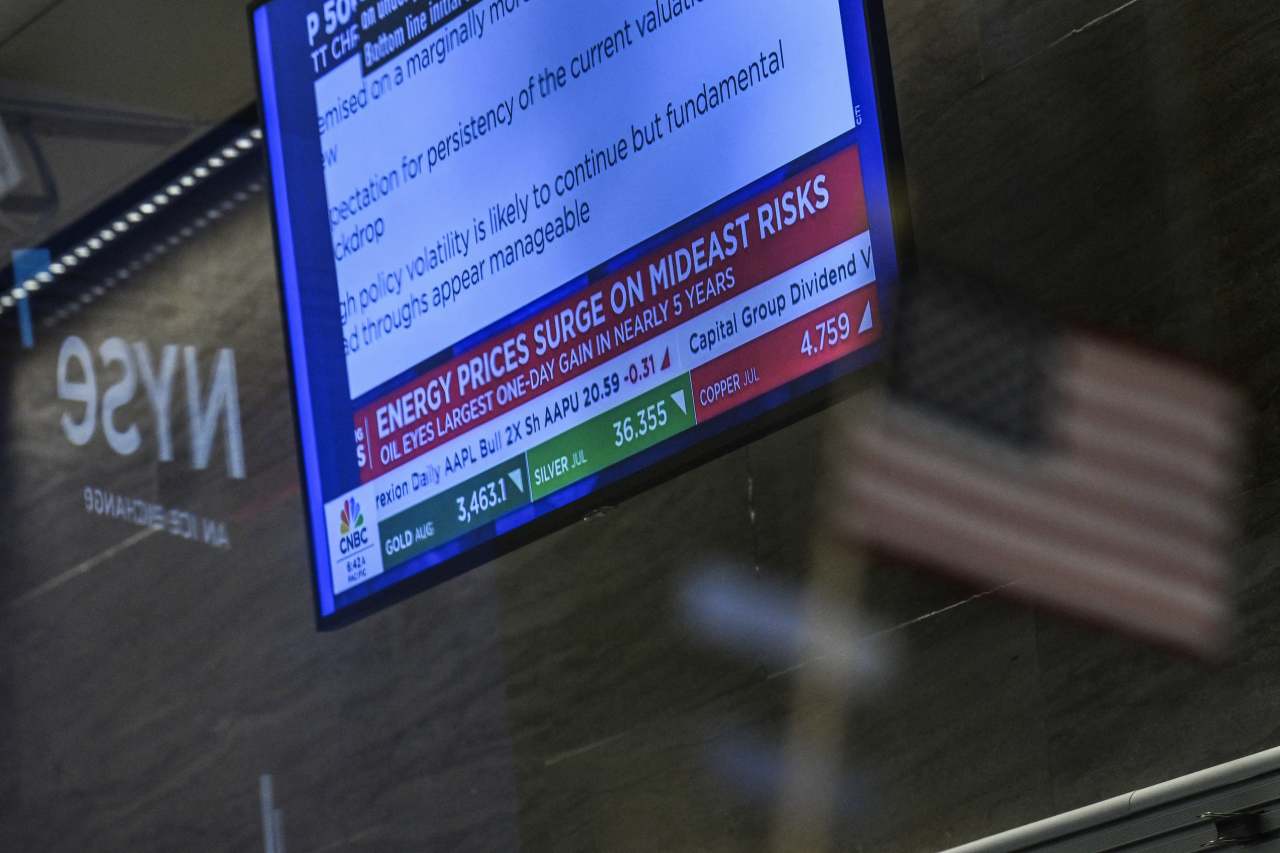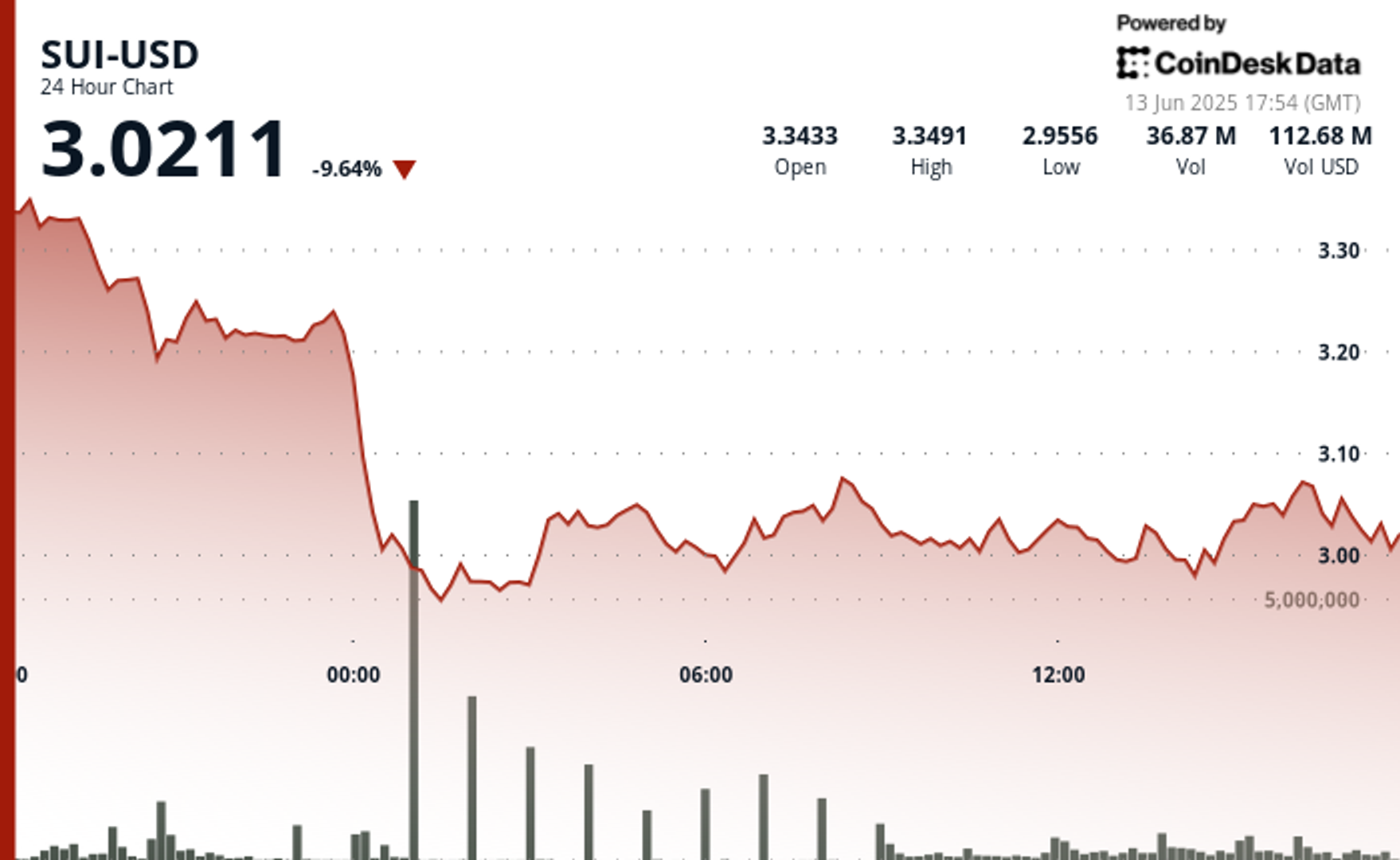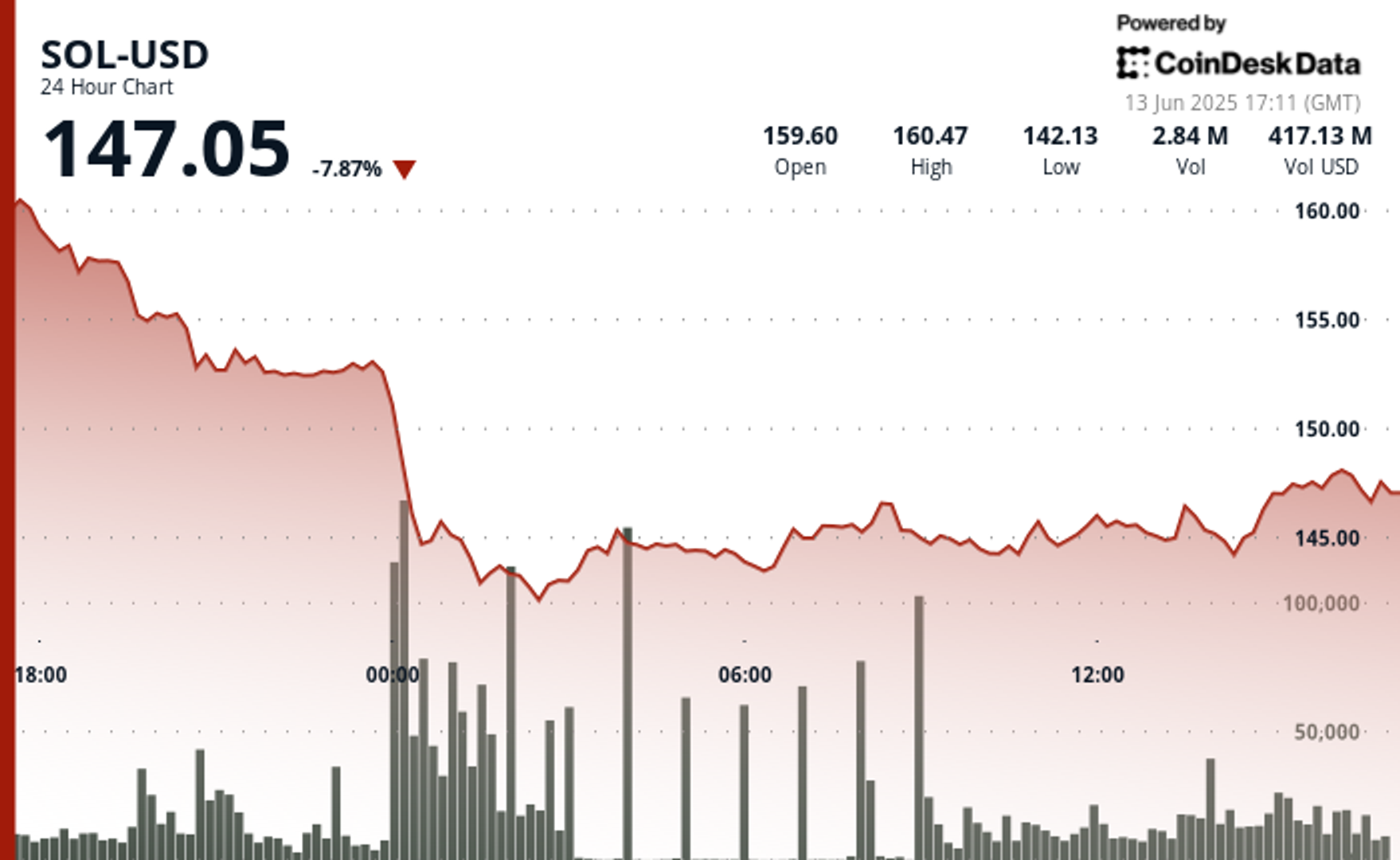U.S. water infrastructure is crumbling: It’s time to revitalize it
In an age defined by self-driving cars, autonomous spacecraft, and artificial intelligence, it may come as no surprise that the science of effective water management often goes unnoticed. Many of us—especially in the U.S.—have grown accustomed to the convenience of clean, reliable water, and often take it for granted. In fact, most Americans engage with the U.S. water system only via a series of fleeting touch points—when they turn a faucet, water their lawn, or start their dishwasher—and have come to expect a seamless experience. And yet, behind the scenes, there is a complex, intricate network dedicated to providing safe and dependable water to hundreds of millions of Americans. But over the past several years, faced with unrelenting pressure, that system has started to crack. The truth is that water infrastructure across the U.S. is under immense strain. Decades of underinvestment, extreme weather events, and a huge increase in demand mean our nation’s water system is no longer fit for purpose. Wasted water One of the most significant areas of concern? Waste. The way we currently use, transport, and capture water is tremendously wasteful. In fact, the U.S. wastes more than 6 billion gallons of treated water a day due to pipe breaks and leaks—enough to fill more than 9,000 Olympic-size swimming pools. Not only is that irresponsible, it’s also incredibly expensive: Water main breaks alone cost Americans $2.6 billion a year in repair and maintenance costs. Across the U.S., the rise of extreme weather events has exacerbated these issues. When there is too much water for one system to take, like during a hurricane, communities face excessive flooding, erosion, inefficient stormwater management, and unsafe water supply. When there is too little—for example, during a heat wave—towns, cities, and entire states must navigate depleted aquifers, groundwater reservoirs, and, in the most severe cases, sustained droughts. Put simply, water management—our ability to effectively control and leverage water as a holistic resource—has become an area of critical importance. The good news is that we’re not starting from scratch. The Infrastructure Investment and Jobs Act, signed into law in 2021, allocated more than $50 billion to water infrastructure projects, including $20 billion for safe drinking water and $15 billion to replace lead pipes. But much more is needed. According to the 2025 American Society of Civil Engineers report: “In 2023, the Environmental Protection Agency (EPA) determined that the nation’s water infrastructure needs stand at $625 billion over 20 years.” That exceeds the EPA’s 2018 assessment by more than $150 billion. The reality is that if we want to future-proof water infrastructure for the next generation, we need distinct, separate funding streams dedicated to improving water management programs, addressing the existing shortfall, and ensuring that no American suffers the consequences of poor water management, no matter where they live. Innovation is required Of course, solving such an immense challenge will require more than funding alone. We also need to embrace the transformational power of innovation. At its core, technology significantly improves our capacity to understand, react to, and solve complex water problems, making the entire water network more resilient, accessible, and easily managed. Fundamentally, it makes the invisible “visible.” One of the reasons this is such a complex problem is because almost everything is underground. Thanks to technology, we are able to remove some of that obscurity, generating a degree of insight that previously we never thought was possible. Nowhere is that commitment more evident than in the work being done across the industry to integrate and scale artificial intelligence. By combining predictive and real time AI-driven analysis, innovative companies across the U.S. are developing the tools required to detect areas of elevated break risk and allow cities and counties to prioritize repairs to the most urgent areas of the network. Cutting-edge companies like Voda.ai, an AI software in which my company just invested that helps utilities create plans and do risk modeling, are a great example of that commitment in action, demonstrating just one of the many exciting projects we’re seeing across the sector. But AI isn’t the only technology changing how water infrastructure is managed. Today, digitally powered smart drainage systems can adjust flow rates in response to real-time climate data—helping to mitigate flood risk—and provide more control over when and where water is diverted. These systems can be integrated into major infrastructure projects, protecting critical buildings and reducing the potential damage to at-risk communities. Unfortunately, like with most technologies, there is no silver bullet that can address all the problems we face. Instead, what we have is a wide range of capabilities

In an age defined by self-driving cars, autonomous spacecraft, and artificial intelligence, it may come as no surprise that the science of effective water management often goes unnoticed. Many of us—especially in the U.S.—have grown accustomed to the convenience of clean, reliable water, and often take it for granted.
In fact, most Americans engage with the U.S. water system only via a series of fleeting touch points—when they turn a faucet, water their lawn, or start their dishwasher—and have come to expect a seamless experience.
And yet, behind the scenes, there is a complex, intricate network dedicated to providing safe and dependable water to hundreds of millions of Americans. But over the past several years, faced with unrelenting pressure, that system has started to crack.
The truth is that water infrastructure across the U.S. is under immense strain. Decades of underinvestment, extreme weather events, and a huge increase in demand mean our nation’s water system is no longer fit for purpose.
Wasted water
One of the most significant areas of concern? Waste. The way we currently use, transport, and capture water is tremendously wasteful. In fact, the U.S. wastes more than 6 billion gallons of treated water a day due to pipe breaks and leaks—enough to fill more than 9,000 Olympic-size swimming pools. Not only is that irresponsible, it’s also incredibly expensive: Water main breaks alone cost Americans $2.6 billion a year in repair and maintenance costs.
Across the U.S., the rise of extreme weather events has exacerbated these issues. When there is too much water for one system to take, like during a hurricane, communities face excessive flooding, erosion, inefficient stormwater management, and unsafe water supply. When there is too little—for example, during a heat wave—towns, cities, and entire states must navigate depleted aquifers, groundwater reservoirs, and, in the most severe cases, sustained droughts.
Put simply, water management—our ability to effectively control and leverage water as a holistic resource—has become an area of critical importance.
The good news is that we’re not starting from scratch. The Infrastructure Investment and Jobs Act, signed into law in 2021, allocated more than $50 billion to water infrastructure projects, including $20 billion for safe drinking water and $15 billion to replace lead pipes.
But much more is needed. According to the 2025 American Society of Civil Engineers report: “In 2023, the Environmental Protection Agency (EPA) determined that the nation’s water infrastructure needs stand at $625 billion over 20 years.” That exceeds the EPA’s 2018 assessment by more than $150 billion.
The reality is that if we want to future-proof water infrastructure for the next generation, we need distinct, separate funding streams dedicated to improving water management programs, addressing the existing shortfall, and ensuring that no American suffers the consequences of poor water management, no matter where they live.
Innovation is required
Of course, solving such an immense challenge will require more than funding alone. We also need to embrace the transformational power of innovation.
At its core, technology significantly improves our capacity to understand, react to, and solve complex water problems, making the entire water network more resilient, accessible, and easily managed. Fundamentally, it makes the invisible “visible.”
One of the reasons this is such a complex problem is because almost everything is underground. Thanks to technology, we are able to remove some of that obscurity, generating a degree of insight that previously we never thought was possible.
Nowhere is that commitment more evident than in the work being done across the industry to integrate and scale artificial intelligence. By combining predictive and real time AI-driven analysis, innovative companies across the U.S. are developing the tools required to detect areas of elevated break risk and allow cities and counties to prioritize repairs to the most urgent areas of the network. Cutting-edge companies like Voda.ai, an AI software in which my company just invested that helps utilities create plans and do risk modeling, are a great example of that commitment in action, demonstrating just one of the many exciting projects we’re seeing across the sector.
But AI isn’t the only technology changing how water infrastructure is managed. Today, digitally powered smart drainage systems can adjust flow rates in response to real-time climate data—helping to mitigate flood risk—and provide more control over when and where water is diverted. These systems can be integrated into major infrastructure projects, protecting critical buildings and reducing the potential damage to at-risk communities.
Unfortunately, like with most technologies, there is no silver bullet that can address all the problems we face. Instead, what we have is a wide range of capabilities that, when used effectively, help drive down risk, mitigate major disruptions, and protect the most vulnerable parts of the network.
The path ahead
When you look at the challenges facing U.S. water infrastructure, it’s clear that significant hurdles remain. But there are also tremendous opportunities.
The continued onshoring of critical services (including the production of computer chips fueling next-generation AI) should provide our country with additional motivation to address existing water infrastructure shortfalls so that we can ensure our communities—as well as our manufacturing and services industries—have access to safe and reliable water, wherever they need it most.
The time has come for the U.S. to pay back its water infrastructure debt, and give one of our most precious and economically important resources the attention it deserves.





![X Highlights Back-To-School Marketing Opportunities [Infographic]](https://imgproxy.divecdn.com/dM1TxaOzbLu_kb9YjLpd7P_E_B_FkFsuKp2uSGPS5i8/g:ce/rs:fit:770:435/Z3M6Ly9kaXZlc2l0ZS1zdG9yYWdlL2RpdmVpbWFnZS94X2JhY2tfdG9fc2Nob29sMi5wbmc=.webp)




























































































































































































